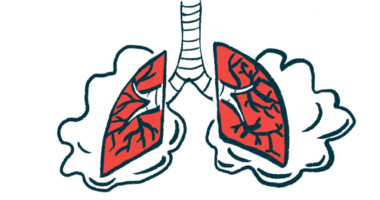LEMS Case Shows Need for Testing To Prevent Treatment Delays

The case of an 8-year-old girl with Lambert-Eaton myasthenic syndrome (LEMS) who had no signs of a tumor, but had progressive muscle weakness, shows the need for comprehensive analysis and thorough investigation to prevent treatment delays.
The report, “Lambert-Eaton myasthenic syndrome in a young girl,” was published in BMJ Case Reports.
LEMS is a rare autoimmune disorder that arises from the body’s immune system wrongly attacking voltage-gated calcium channels (VGCCs) on nerve cells that play a key role in nerve-muscle communication. The disease is marked by the gradual onset of muscle weakness, mainly affecting the hips and upper legs.
In most cases, LEMS is seen in adults with a malignant tumor, often a small cell lung cancer. However, LEMS can also occur in the absence of a tumor, most commonly due to a family history of autoimmune diseases.
Thus far, 12 reports have described cases of LEMS in children. Of these, only three were linked to a malignant tumor: a neuroblastoma, which arises in immature nerve cells, in one case; and a lymphoproliferative disorder, characterized by the excessive proliferation of white blood cells, in the other two cases.
Researchers at the Yale School of Medicine described the case of an 8-year-old Latina girl who was seen at a clinic after having generalized muscle weakness for more than three months. The muscle weakness was more severe in her legs and she had an unsteady gait. She had a family history of thyroid disease.
The girl developed intermittent fevers, a rash along her torso, sore throat, mouth sores, headaches, and stomach problems. The symptoms resolved within three months, but were followed by a progressive weakness. The girl had difficulty getting in and out of bed, and frequently lost her balance.
The symptoms worsened for more than two months, after which she went to a clinic and was referred to a neurologist who urgently referred her to the emergency room for inpatient admission. A neurological examination showed the girl had low muscle tone, which was more profound in her legs and arms.
She lacked reflexes in different parts of the body, but her mental status, coordination, and sensations were intact.
Blood tests showed no major alterations, but she was positive for antinuclear antibody antibodies — self-reactive antibodies that target proteins in a cell’s nuclei where genetic information is stored. MRI scans showed minimal damage to nerve cells in the lumbar spine.
She was discharged with a potential diagnosis of muscular dystrophy and was referred as an outpatient to a neuromuscular clinic.
Her condition was deemed stable after examination at the clinic nine days later. An electromyogram (EMG), which records electrical signals coming from a muscle in response to a nerve signal, suggested chronic damage to motor nerve cells, which control voluntary muscle movements. Test results were preliminary as the girl did not tolerate the procedure well, however.
A neurologist reviewed these findings along with the early MRI of her spine and referred the girl again to the hospital for another MRI and a spinal tap so that a sample of cerebrospinal fluid (CSF), the liquid surrounding the brain and spinal cord, could be collected and analyzed.
At this point, she was believed to have Guillain-Barré syndrome, a rare disorder in which the body’s immune system attacks nerves.
Analysis of the CSF was negative for cancer-related antibodies, as well as for antibodies against SARS-CoV-2, the virus that causes COVID-19, and for Lyme disease.
She received intravenous immunoglobulins into the bloodstream for five days as a treatment for Guillain-Barré syndrome, but failed to improve and was discharged again to an outpatient clinic for follow-up. Her condition showed no change in a consultation with a neurologist a month later.
An EMG conducted under sedation revealed impairments in nerve-muscle communication, consistent with a neuromuscular junction disorder. Tests for myasthenia gravis (MG), a neuromuscular condition triggered by an autoimmune response, were deemed negative.
The girl was admitted for evaluation and treatment of LEMS and a potential underlying malignant condition.
She had five sessions of plasmapheresis, a treatment wherein a patient’s plasma — the liquid portion of blood — is replaced. Further blood tests revealed she was positive for VGCC antibodies.
She repeated the MRI of her lumbar spine, which showed no evidence of nerve damage. Previous MRI nerve damage findings were deemed to be erroneous. An MRI of the chest, abdomen, and pelvis and a full body PET scan, another imaging technique, along with additional tests, failed to detect any signs of tumors.
She was diagnosed with LEMS and received treatment with amifampridine (sold as Firdapse, formerly as Ruzurgi) and daily prednisone, a corticosteroid. She also received a two-day course of intravenous immunoglobulins.
Her condition improved after each plasma exchange session. At the time of her discharge, her muscle strength was similar to what she had on her first doctor appointment.
This case report highlights the marked “importance to develop a broad differential that includes LEMS, when working up a child with profound weakness to prevent delay in diagnosis and treatment initiation,” the researchers wrote.







